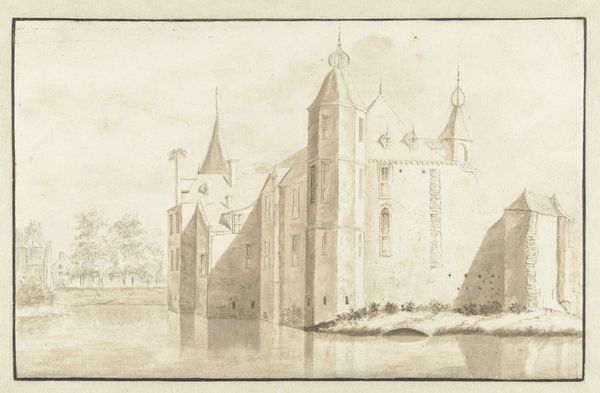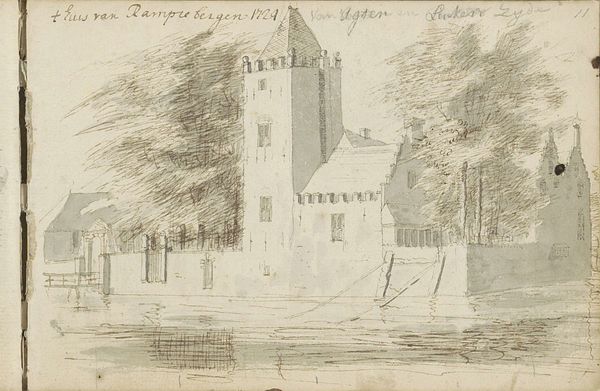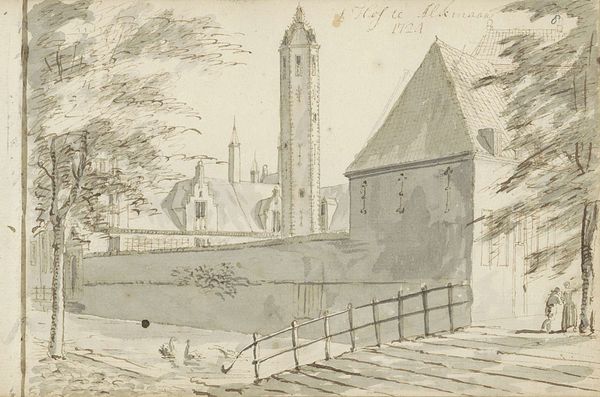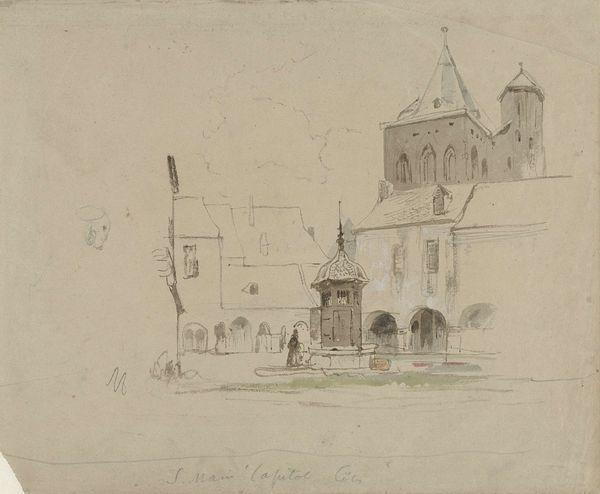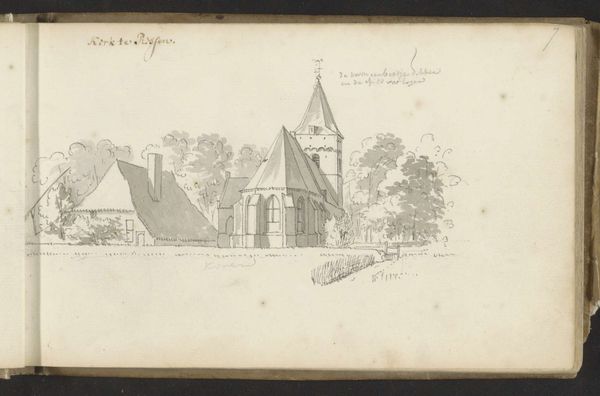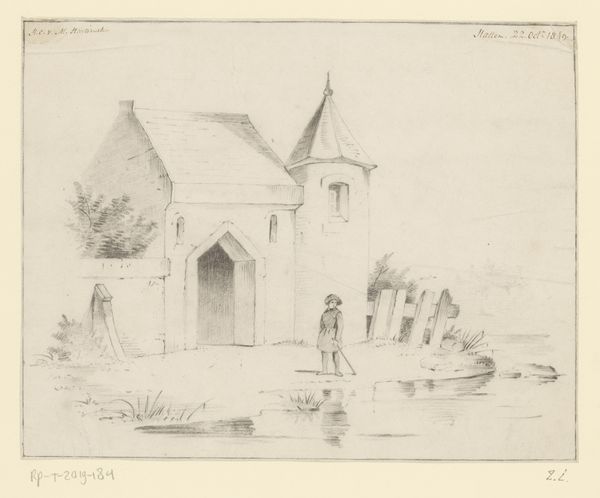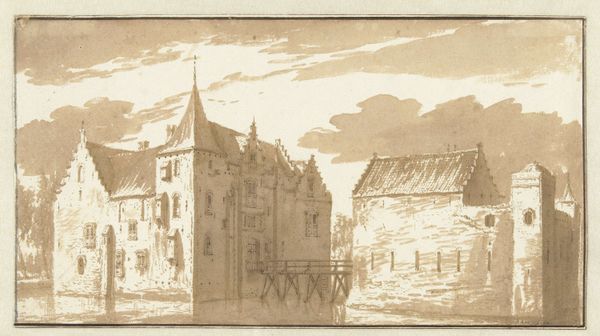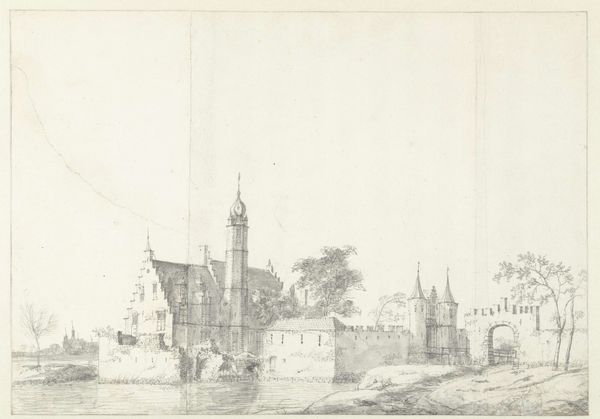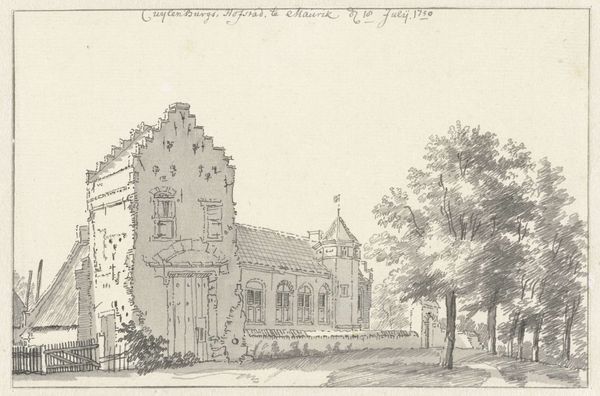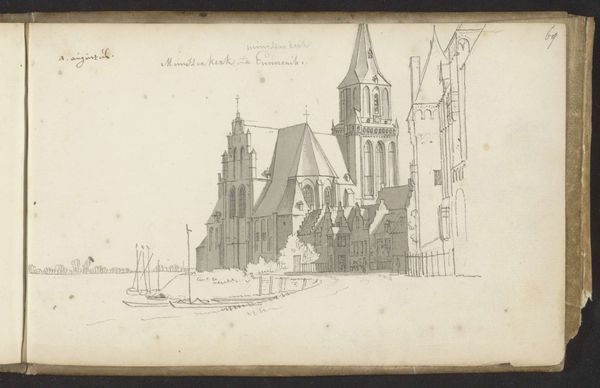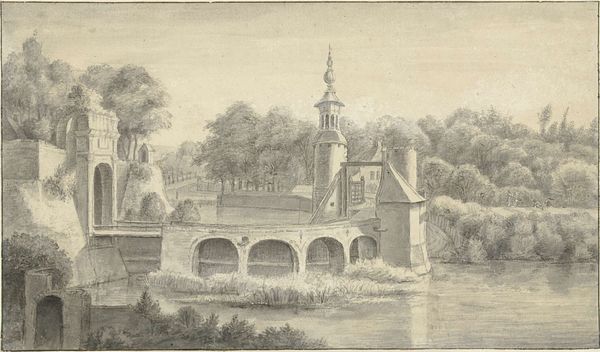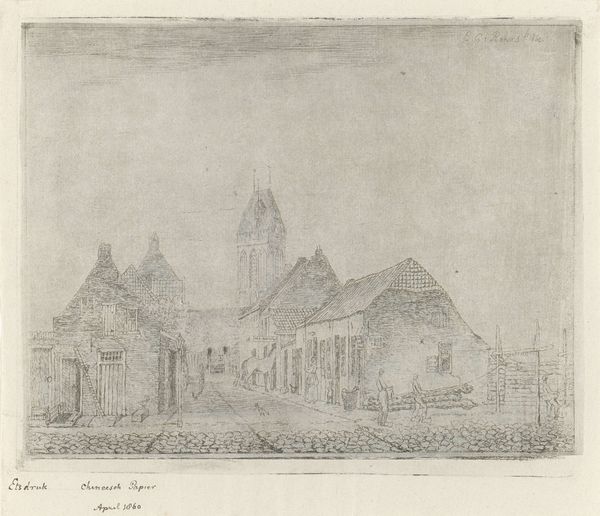
drawing, paper, ink, architecture
#
drawing
#
baroque
#
landscape
#
paper
#
ink
#
architecture drawing
#
watercolor
#
architecture
Copyright: Rijks Museum: Open Domain
Editor: Here we have Abraham Meyling’s “Huis Ter Coulster te Heiloo,” created in 1724 using ink, watercolor, and drawing on paper. There's a certain quietness to it, almost a dreamlike quality to this castle surrounded by water. What’s your perspective on this work? Curator: I see a fascinating intersection of power, landscape, and representation in this seemingly simple drawing. Think about the social context of the Dutch Golden Age, which extended into the 18th century. These grand estates were not merely residences; they were symbols of wealth and status, built upon colonial exploitation. Editor: That's a really interesting perspective. I was mainly focusing on the art itself and not necessarily on any wealth-building context. Curator: Consider how the artist meticulously renders the architectural details. This isn't just about showcasing a building; it’s about documenting power and claiming ownership of the landscape through visual representation. The act of depicting the building can then be interpreted as symbolic support to class systems of the era. Who did this house belong to? What power dynamics are on display? Editor: I didn’t think about the relationship of documentation of power through art at the time. Curator: Exactly. Furthermore, reflect on the subtle use of water. It is not simply decorative; it creates both literal and symbolic barriers. The residents of such spaces were often shielded from the realities faced by the broader populace. What does that mean for contemporary engagement with landscapes such as these? Editor: So you’re saying it is important to explore power structures and socio-economic narratives behind a beautiful artwork. Curator: Precisely. Examining the historical and societal dimensions of art allows us to have a deeper understanding of social structures. Editor: I will look at these kinds of art through a more critical lens from now on. Thanks for your insights!
Comments
No comments
Be the first to comment and join the conversation on the ultimate creative platform.

